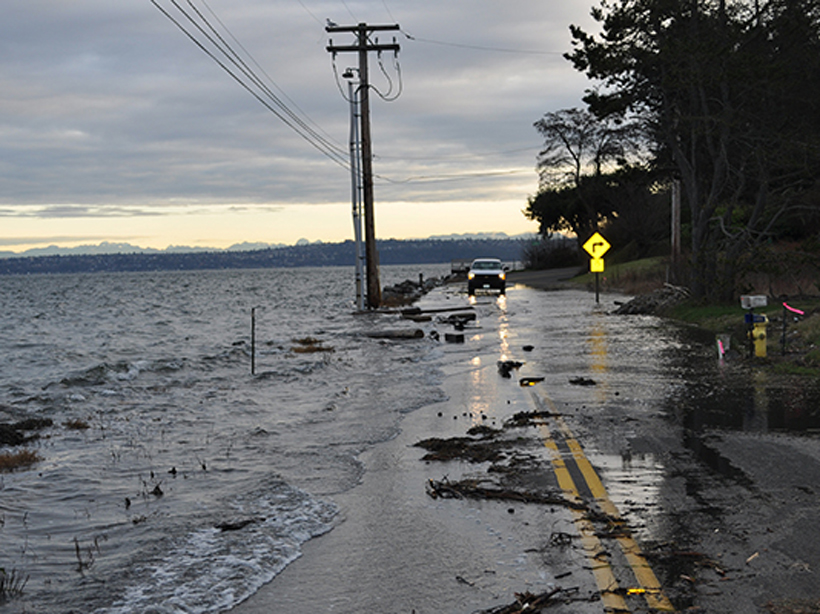Source: Earth’s Future
From heat waves, drought, and wildfires to record-low Arctic sea ice levels to flooding and heavy rainfall, scientists worldwide have struggled to understand the most critical aspects of climate. In the coming decades, as these symptoms persist, humans must—in the interest of environmental health and to prevent trillions of dollars in economic losses—be prepared to deal with the impacts these changes will have on roads and buildings, agriculture, water availability, and other critical infrastructure.
Following years of discussion between climate scientists, natural resource managers, and policy makers, the World Climate Research Program has identified seven Grand Challenges for the climate community. Now Weatherhead et al. have outlined an overarching plan for addressing these challenges with observations that will help resolve previously unanswered questions regarding climate change, variations, and extremes.
The team of researchers agreed that existing Earth observation systems are limited, leading to large unacceptable uncertainties regarding future climate and the risk associated with extreme events. These limitations are partly technological, but more problematic is a lack of coordination and planning. Scientists, environmental managers, and other officials tend to focus on specific, individual problems related to weather prediction, land resource management, agriculture, or air pollution, rather than examining the big picture: the Earth system as a whole. Plus, the national and international agencies that oversee environmental issues have wildly different budgeting and decision-making structures. The team suggests that there ought to be a comprehensive Earth-observing system that could allow scientists to test hypotheses that consider the entire environmental system.
The researchers also emphasize that rather than letting the available technology determine what scientific studies can be done, we should aim to let science questions drive the technology we choose to invest in. They compare the situation to the search for the Higgs boson, in which the standard model of particle physics served as a scientific blueprint for experimentation and numerous countries invested in funding and staffing the Large Hadron Collider (the facility where the elusive particle was eventually detected). In terms of Earth’s environment, climate models and data—which shed light on clouds and air circulation, melting ice, extreme weather, sea level and coastal changes, water for the world’s food baskets, the carbon cycle, near-term climate, and more—can be effectively coordinated to provide a similar scientific blueprint going forward. The economic value of being able to provide input to these challenging societal needs far outstrips the current investment in Earth observations.
By collaboratively investing in the collection of climate data—via satellite, piloted aircraft, drones, ground-based sensors, and contributions from citizen scientists—the researchers say, countries can continue to develop continuous, long-term (multidecadal) data records spanning across all seasons and regions of the globe. With these records, scientists can better understand environmental processes, answer key questions about climate, and improve weather and climate predictions years (and even decades) in advance. In turn, with more accurate forecasts, policy makers and other officials could more effectively work to mitigate and adapt to changes and potentially develop responses such as geoengineering: engineering Earth itself to adapt to the changing climate.
Additionally, the researchers say, there would need to be a system in place to ensure that all observations are efficient and are effective at addressing proposed science questions. They recommend setting quantifiable performance goals to best serve science and society, again, treating these observations as an investment for society, rather than an indulgence to satisfy curiosity.
This study outlines a different vision for climate observations of the future, where observations are viewed as a necessary part of infrastructure to serve society and allow for cost-effective planning of infrastructure and human activity. This alternative perspective allows an assessment of the value of these observations and ensures that nations, companies, and individuals have the information they require to make critical decisions. By developing a cohesive Earth-observing system, scientists and policy makers alike can be singularly empowered to better understand and respond to our world’s changing climate. (Earth’s Future, https://doi.org/10.1002/2017EF000627, 2017)
—Sarah Witman, Freelance Writer
Citation:
Witman, S. (2018), Reckoning with climate’s most challenging questions, Eos, 99, https://doi.org/10.1029/2018EO090603. Published on 23 January 2018.
Text © 2018. The authors. CC BY-NC-ND 3.0
Except where otherwise noted, images are subject to copyright. Any reuse without express permission from the copyright owner is prohibited.

